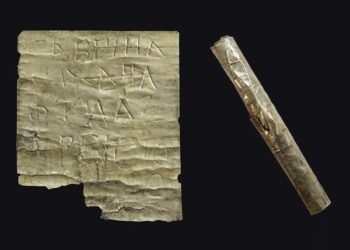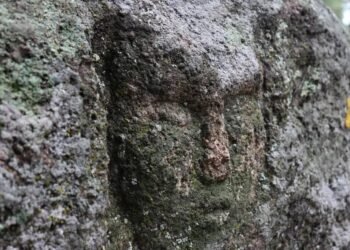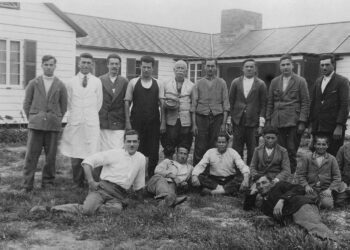The shaft tomb of the ancient Egyptian dignitary Wahibre-mery-Neith – who commanded foreign soldiers in Egypt – that was uncovered by a Czech archaeological mission from Charles University in Abusir near Saqqara has shed light on “globalisation” in the ancient world.
 The tomb, which was uncovered during the spring excavation season that ended in June, dates to between the late 26th and early 27th Dynasties, around 500 BC.
The tomb, which was uncovered during the spring excavation season that ended in June, dates to between the late 26th and early 27th Dynasties, around 500 BC.
Mostafa Waziri, secretary general of the Supreme Council of Antiquities, said that the main shaft tomb of Wahibre-mery-Neith is six metres deep and it measures approximately 14 by 14 metres and is divided into several parts, separated by bridges made of the original bedrock.
Another smaller but deeper shaft that was used for the burial was dug into the bedrock in the centre of the main shaft. It is orientated east-west and measures approximately 6.5 by 3.3 metres.
“The layout of this shaft tomb has no exact parallel in ancient Egypt, although it partly resembles the structure of the nearby tomb of Udjahorresnet and the so-called Campbell’s tomb in Giza,” he added.
Mirosalv Barta, head of the Czech mission, explained that at the bottom of this central burial shaft, at a depth of about 16 metres, a double sarcophagus was found, partly damaged, on a filling of sand.
The outer sarcophagus of Wahibre-mery-Neith was made of two massive blocks of white limestone with an inner anthropoid sarcophagus embedded within.
It is made of basalt and inscribed with verses from chapter 72 of the Book of the Dead depicting the resurrection of the deceased and his departure to the afterlife.
The anthropoid sarcophagus measures 2.30 metres in length and 1.98 metres in width.
Barta said that the space inside the inner basalt sarcophagus was found almost completely empty, only containing an uninscribed and finely carved heart scarab and a headrest shaped amulet.
Sparse burial equipment had been placed at the western and eastern sides of the sarcophagus.
To the east, several objects were excavated intact and in situ, including 402 faience ushabti figurines (servant figures who were to undertake labour instead of the owner in the afterlife), two alabaster canopic jars, a faience model of an offering table, ten model cups, and a limestone ostracon inscribed with religious texts written in black ink and hieratic script.
“Due to the limited space, the author of the text decided to cover the ostracon with brief excerpts from the Book of the Dead spells that also formed parts of the ritual of transfiguration and thus guarantying an undisturbed afterlife existence of the owner,” Barta pointed out.
He added that early studies on the shaft tomb reveal that it has been robbed in late antiquity, most probably around the fourth or fifth century AD, as witnessed by two early Coptic vessels found forgotten in the main shaft.
The looters made an opening in the western part of the outer sarcophagus and smashed the facial (western) part of the lid of the inner sarcophagus into pieces, which were found around the sarcophagus by excavators.
“Although the archaeological excavation of the burial of Wahibre-mery-Neith did not offer many excavated objects or an elaborate funerary equipment, it is unique and important,” asserted Mohamed Megahed, deputy director of the Czech mission.
Megahed explained that the discovery offers new insights into the troubled period of the beginning of Persian dominion in Egypt.
In combination with outcomes of the ongoing research on the owner’s embalming deposit, a picture of Wahibre-mery-Neith’s life, family background and professional career starts to emerge indicating that he most probably died unexpectedly when his tomb and burial equipment were still unfinished.
Thus, both the layout of his tomb and its contents provide very valuable information on the importance and meaning of individual parts of the burial equipment and tomb decoration.
Provided by Ahram Online
Images: Ministry of Tourism & Antiquities





































